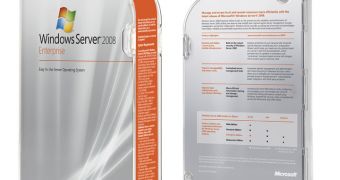At the Microsoft Virtualization Launch on September 8, 2008, the Redmond giant delivered the first public demonstration of Windows 7 Server, the codename for Windows Server 2008 R2. The software company is developing Windows 7 Server and the Windows 7 Client in parallel but essentially based on the same core. And just as Windows 7 is the evolution of Windows Vista, so is Windows 7 Server the next iteration of Windows Server 2008. The difference in this context is the fact that while the Windows 7 Client is built as a major version of Windows, Windows 7 Server is nothing more than a minor update of the latest Windows Server operating system, a thing evident even from the official label, namely Windows Server 2008 R2.
"What I wanted to do now was turn to something in the not too distant future, and give you an idea of (...) the next release of Hyper-V, and the next release of Windows Server 2008 Code Named R2. This is the first time we've done a public demonstration of the next release of Windows Server," Bob Muglia, senior vice president, Server and Tools Business at the Microsoft Virtualization Launch stated at the event.
Muglia went on to demo Windows Server 2008 R2, presenting the Live Migration feature, planned for availability with the release of the update for Windows Server 2008. At the same time, the promise was that at PDC2008 and WinHEC 2008, Microsoft will unveil more details on Windows 7 Server. "There's actually quite a few new features there which we'll talk about both at the upcoming PDC (Professional Developer’s Conference) in late October, as well as at WinHEC which is the first week of November. We'll go into a lot of detail on Server 2008 R2 at that time," Muglia added.
While Windows 7 Server is sufficiently advanced for a public demo, Windows 7 Client reached this milestone back in May 2008, courtesy of Julie Larson-Green, corporate vice president, Windows Experience Program Management. Windows Server 2008 R2 marks Microsoft's break from 32-bit computing on the server-side. In contrast, Windows 7 Client will be delivered in both 32-bit and 64-bit flavors.
"While it may take a while for client computing to reach the stage where 64-bit is the norm and 32-bit the exception, that day is coming soon for servers - and it may be today. A few quick facts: x64 processors have been with us for over 5 years now. Microsoft announced several years ago that Windows Server 2008 would be the last server OS available in 32-bit. Windows Server 2008 R2 will be 64-bit only. [According to] our evaluation download figures, more than half of the downloads were of the x64 edition of Windows Server 2008. The virtualization features of today’s processors require 64-bit," revealed Dan Reger, senior product manager, Windows Server.

 14 DAY TRIAL //
14 DAY TRIAL //